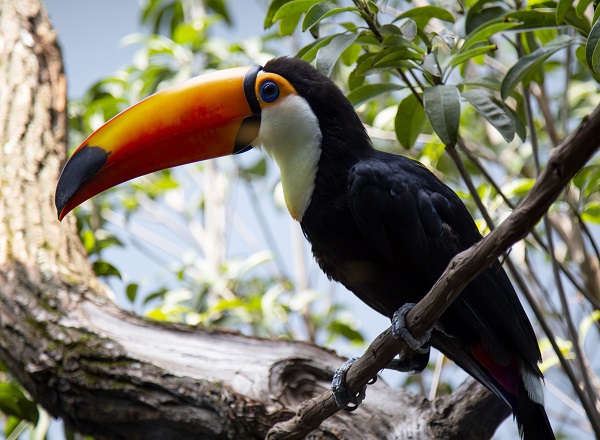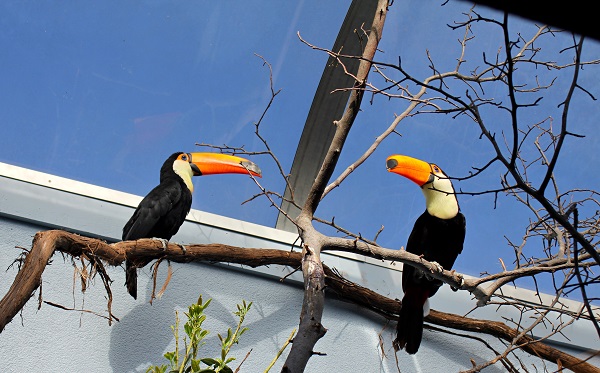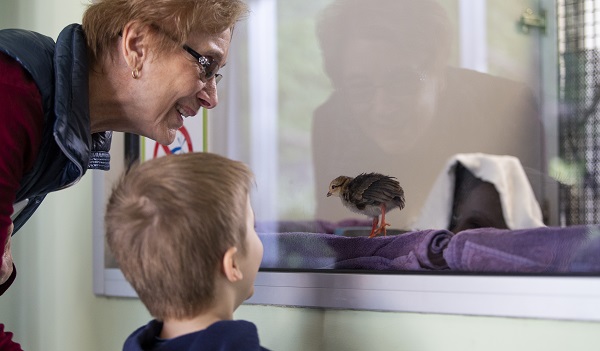
Pretty birds! A pair of toucans just landed as a double bill at the Aviary
Photo by Lindsey Shuey.
There’s a new pair of birds at the National Aviary on the North Side and you “too can” see them!
Known for their distinctive plumage and large beaks, the Toco Toucans – the largest of the 40 or so toucan species that live in parts of Central and South America – occupy the TreeTops habitat at the Aviary.
The yet-to-be-named female and male are 1 and 2 years old, respectively, and can begin breeding at 3 to 4 years of age. Visiting kids can be on the lookout for bonding behavior. The male might bring food to his main squeeze. Or the couple might engage in bill tapping, a behavior in which the birds repeatedly tap their beaks against one another’s or interlock them. Once of age, a feathered mama lays two to four eggs in a clutch.

Kids also will notice that these birds hop as often as they fly and can rotate their bodies 180 degrees, side-to-side, as they bounce along branches.
The new additions aren’t the only Froot Loop-loving flappers at the Aviary. Four Curl-crested Aracaris and one Green Aracari are smaller species of toucan. Guests can feed and get their picture taken with an aracari during daily feedings at 11:30 a.m. and 3:30 p.m. for an additional $5, though anyone can come in and watch the feeding.

While you’re in the TreeTops, say hello to another pair of newbies, The Edwards’s Pheasants.
Native to Vietnam, the species was last observed in the wild in 2000 and was believed to be extinct. The couple arrived last winter and hatched a chick on April 25. The baby can be seen daily in the Avian Care Center window.
There is no set schedule for when new birds arrive at the Aviary, America’s only independent, indoor, nonprofit zoo dedicated exclusively to winged creatures.
“We get new birds from hatchings that occur here and from other accredited zoos,” says Robin Weber, senior director of marketing & community relations. “We work together to provide the best home for the birds based on their needs and preferences, the ability to bring forward important messages about conservation and protecting the natural world, and to create optimum opportunities for breeding.”
The Aviary’s collection includes 500 birds representing more than 150 species from around the world, many of them threatened or endangered in the wild.